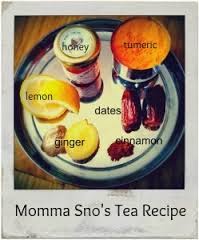LAZINESS:
It is the desire to be idle, to do nothing and resist effort.
It is a state of passivity and of letting things stay as they are.
Sometimes, we enjoy being a little lazy, such as after working hard for several hours, or on a very cold or warm day, but if this state occurs too often, something has to be done about it.
In order to perform our chores and work efficiently, and to live a full, active and successful life, we must learn how to overcome laziness.
SIMPLE TIPS FOR OVERCOMING LAZINESS:
1) Break down a task into smaller tasks
We often avoid tasks because we find them too big, too overwhelming, too tiring, or taking too much of our time.
We often avoid tasks because we find them too big, too overwhelming, too tiring, or taking too much of our time.
Breaking a task into several smaller tasks can solve this problem. Then, each one will not seem so difficult or intimidating. Instead of having one big task, we will have a series of small tasks, which do not require too much effort.
This approach can be applied not only to tasks, but also to goals and everything else we have or need to do. This will
tend to melt much of the laziness and inner resistance we often experience.
2) Rest, sleep and exercise
In some cases, laziness is due to being tired and lacking energy. If this is true in your case, you need to give yourself the rest and sleep you need, and also give your body enough exercise and fresh air.
In some cases, laziness is due to being tired and lacking energy. If this is true in your case, you need to give yourself the rest and sleep you need, and also give your body enough exercise and fresh air.
3) Motivation
In some cases, the reason for laziness is due to lack of motivation. You can strengthen your motivation through affirmations, visualization and thinking about the importance of performing your task or chore or achieving your goal.
In some cases, the reason for laziness is due to lack of motivation. You can strengthen your motivation through affirmations, visualization and thinking about the importance of performing your task or chore or achieving your goal.
4) Have a vision of what and who you want to be
Frequently reflecting on the person we want to be, the goals we want to achieve, and the life we want to live, can motivate us to act.
Frequently reflecting on the person we want to be, the goals we want to achieve, and the life we want to live, can motivate us to act.
5) Think about benefits
Think about the benefits you will gain if you overcome your laziness and take action, instead of thinking about the difficulties or obstacles. Focusing on the difficulties of the task or action lead to discouragement, avoidance of taking action and to laziness. It is important that you focus your mind and attention on the benefits, not on the difficulties.
Think about the benefits you will gain if you overcome your laziness and take action, instead of thinking about the difficulties or obstacles. Focusing on the difficulties of the task or action lead to discouragement, avoidance of taking action and to laziness. It is important that you focus your mind and attention on the benefits, not on the difficulties.
6) Thinking about the consequences
Think about what will happen, if you succumb to laziness, and don't perform your task or chore. Thinking about the consequences, if you do not act, can also push you to take action.
Think about what will happen, if you succumb to laziness, and don't perform your task or chore. Thinking about the consequences, if you do not act, can also push you to take action.
7) Doing one thing at a time
Focus on doing one thing at a time. If you feel you have a lot to do, you will probably feel overwhelmed and let laziness overcome you, instead of you overcoming laziness.
Focus on doing one thing at a time. If you feel you have a lot to do, you will probably feel overwhelmed and let laziness overcome you, instead of you overcoming laziness.
8) Visualization
Your imagination has a great influence on your mind, habits and action. Visualize yourself performing the task easily, energetically and enthusiastically. Do so before starting with a task or goal, and also when you feel lazy, or when your mind whispers to you to abandon what you are doing.
Your imagination has a great influence on your mind, habits and action. Visualize yourself performing the task easily, energetically and enthusiastically. Do so before starting with a task or goal, and also when you feel lazy, or when your mind whispers to you to abandon what you are doing.
 9) Repeat affirmations
9) Repeat affirmationsTell yourself:
"I can accomplish my goal."
"Doing things makes me stronger."
"Doing things makes things happen."
10) Regards a task as an exercise
Consider each task as an exercise to make you stronger, more decisive and more assertive.
Consider each task as an exercise to make you stronger, more decisive and more assertive.
11) Procrastination
Avoid procrastination, which is a form of laziness. If there is something you have to do, why not do it right now and get through with it? Why let it stay nagging at the back of your head?
Avoid procrastination, which is a form of laziness. If there is something you have to do, why not do it right now and get through with it? Why let it stay nagging at the back of your head?
12) Learn from successful people
Watch successful people, and how they do not let laziness win. Learn from them, talk with them and associate with them.
Watch successful people, and how they do not let laziness win. Learn from them, talk with them and associate with them.
Overcoming the habit of laziness is achieved through a series of daily actions and activities, when you choose to act, instead of remaining passive. Every time you overcome your laziness you get stronger. Every time you choose to act, you increase your ability to win, achieve goals and improve your life.
























.JPG)






